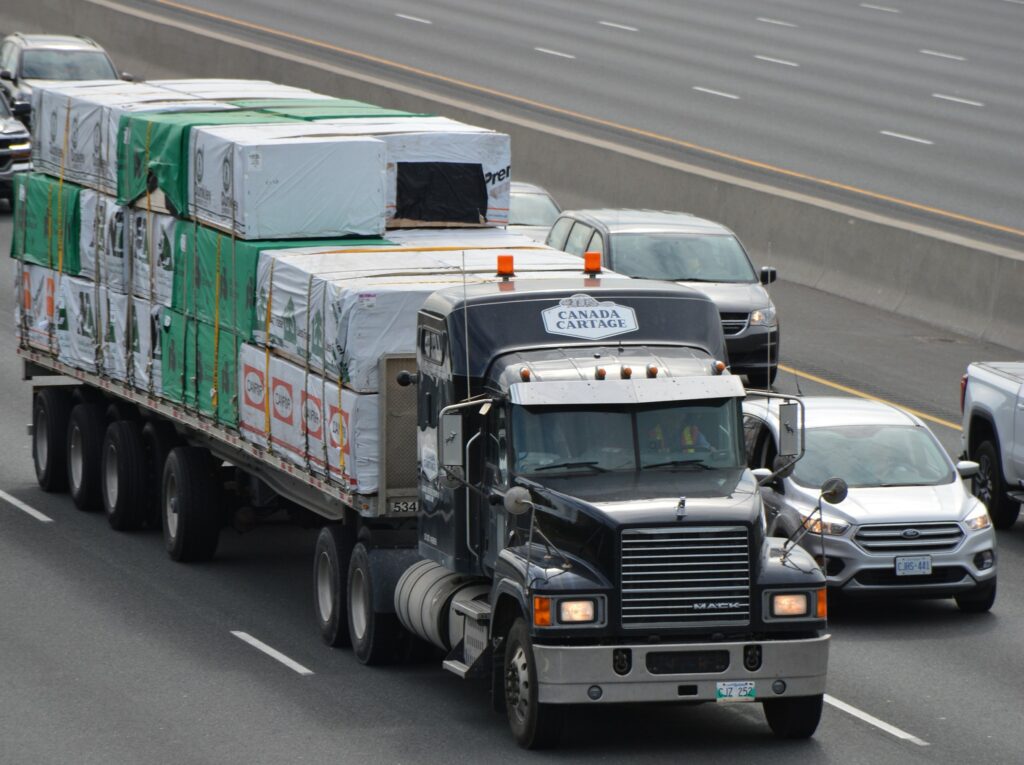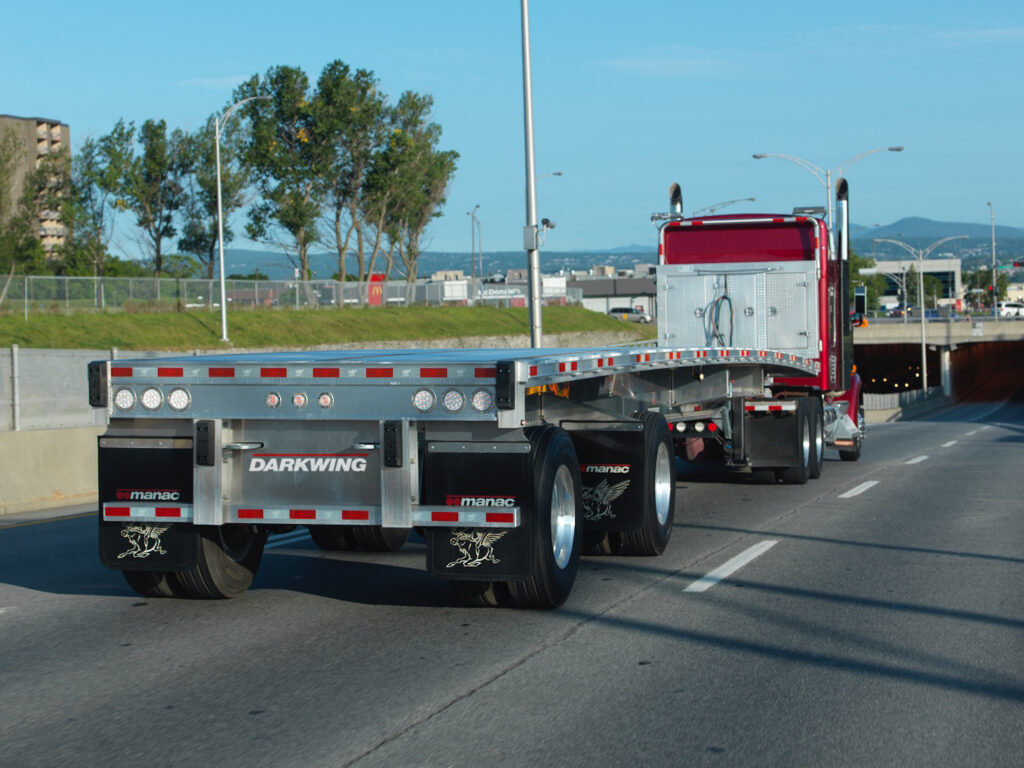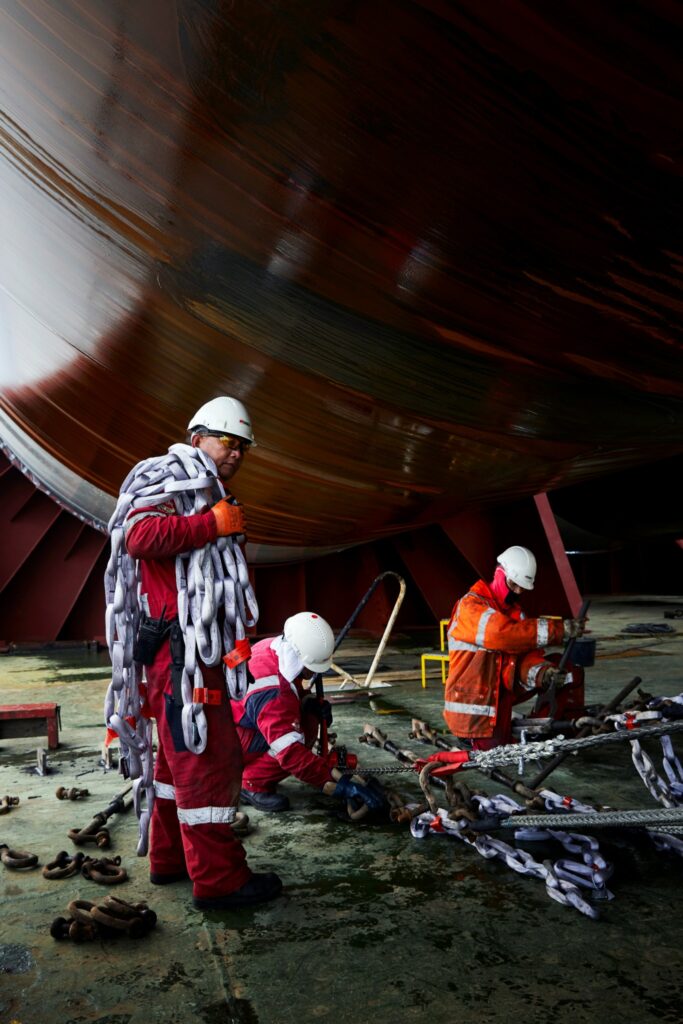Flatdeck fleets focused on weight, longevity…and IQ?
Flatdeck haulers have always looked for light weight and longevity when spec’ing trailers. Now you can add IQ to their list of priorities.
The trend towards smart trailers has been most prevalent in the van segment, but many of those same benefits are proving invaluable for flatdeck fleets as well.
“It can, and it definitely should, be smart,” Kent Crymes, director of channel sales with Phillips Connect Technologies, said of flatdeck trailer design. “On flatbed or open deck equipment, we focus on tracking the piece of equipment. That’s the foundation. Then what makes them smart is focusing on [trailer] health.”
Beyond location data, flatdeck fleets are looking to gain real-time insights into features like lighting status, ABS performance, tire pressures, and the like.

“With the exception of not having a door sensor or cargo sensor [on flatdeck trailers], we can still track the piece of equipment in real-time and assess its health entirely,” Crymes said.
There are two main benefits to adding smart features to trailers. One is to improve operations, by more accurately tracking, dispatching and utilizing equipment. Some GPS is so precise it can steer a driver to the specific trailer they need to find in a crowded yard.
“We have an application where a customer put all empty trailers in a geofence, so the driver just clicks one of those dots and navigates straight to it,” said Crymes. “Picture a large distribution center, when a driver drops a trailer and has to go find an empty. What used to take maybe an hour now only takes a minute.”
And the other benefit is knowing the health status of every trailer, such as when a light is out or a tire has developed a slow leak. Having that information in hand can help fleet maintenance managers reduce roadside breakdowns and violations, and improve driver productivity.

Weight, longevity still important
While trailer intelligence is becoming increasingly important to flatdeck fleets, traditional priorities such as payload and durability remain top of mind. Tom Ramsden, vice-president – sales and marketing with Manac, said advances continue to be made on these fronts.
“For the most part it’s how light can you get it, how low can you get my deck, and how can you make sure the trailer is functional and operational for 20-plus years?” Ramsden said of fleet priorities.
Customers are increasingly spec’ing aluminum trailers, or aluminum/steel combo designs. They’re also looking for corrosion protection, so galvanization is increasingly common.
“We’ve been doing a lot of fully dipped galvanized trailers,” Ramsden said. “Customers that want to get away from paint and steel but require more robustness are transitioning to fully galvanized trailers for a 25-plus-year lifespan.”
Aluminum trailers offer the best weight savings – Manac is working on a 48-ft. Alutrec design that will come in at about 7,200 lb. compared to the average 8,000 lb. designs out there today. But depending on the application, aluminum can show signs of fatigue earlier than a steel or combination design.
“It’s important to have the proper trailer specifications match the operational use case and duty cycle,” said Dennis Skaradzinski, chief engineer with Great Dane. “Reducing trailer weight may not always equate to a good experience…I would recommend open deck operators work with their [OEM] representative and discuss all known operations and expected utilization of the equipment where weight reduction or increased payload are desired.”
Customers need to know in advance what they’ll be hauling and where, and to discuss those details with their supplier or sales rep.
“Don’t take a beam rating with a 40,000 lb. capacity over four feet and haul 50,000 lb. of coil,” warned Ramsden.
Operators must also be mindful of the various jurisdictional regulations they’ll need to comply with, including U.S. bridge formulas if hauling stateside. Manac offers a NAFTA-spec’ that allows three different axle positions for compliance in Canada, the U.S., and Mexico.
Flooring is another area that will contribute to a trailer’s weight and longevity. Aluminum and aluminum/steel combinations are common. To those preferring wood, apitong has become a favorite because of its moisture resistance, Ramsden said.
“It’s naturally repellent to moisture, so you don’t have to put preservatives on it and it will probably double the life of the flooring,” he said.
Spec’ing for drivers
Slinging chains and tarping loads isn’t much fun, and becomes more difficult for drivers as they age. More fleets are investing in spec’s that can make drivers’ lives easier. Ramsden estimates as few as 5% of fleets have yet to invest in technologies such as sliding tarp systems. The added benefit is, with the right spec’, some of those systems allow fleets or owner-operators to seek a greater variety of backhaul freight, including some that would normally be limited to vans.
Fleets are also increasingly spec’ing trailer designs with stairs to make accessing the deck safer and easier. Floor attachments are another popular spec’, allowing drivers to secure cargo from within the trailer deck’s footprint.

Advances in tie-down equipment have also come along. Doleco has come out with a DoNova PowerLash textile lashing chain and tiedown system for heavy haulers, which weighs 85% less than traditional chains and offers a 22,000-lb. working load limit (WLL) compared to the 15,000-lb. WLL of half-inch steel chains, and just shy of the 22,600-lb. WLL of 5/8” steel chain. Ten such tiedowns can do the work of 14 steel chains and the material is 15 times stronger than steel by weight, Doleco claims.
Northwest Logistics Heavy Haul is using the system to transport large volume tanks and vessels.
Ace Carter, engineer for Northwest Heavy Haul said the system saves time and improves safety when securing loads.
“We use [the system] in our super heavy division, which typically has payloads greater than 200,000 lb., because the benefits at that scale justify the expense,” he told Today’s Trucking. “We would consider investing in a lower capacity DoNova chain for common freight if mass production can bring down the cost. Our drivers and crew members primarily praise the lightweight benefits…it makes their job much easier.”
Quebec-based 2T2 Group has introduced the Boa Winch was also designed to make load securement easier and safer. It uses a patented worm gear and handle that the company says eliminates the risk of injuries resulting from strap kickback or winch bar accidents.
A recent study commissioned by its manufacturer found the Boa Winch system: requires half the force to apply the same level of tension of a traditional winch; reduces torque exerted on the lower back, shoulders and elbows during tightening; and can produce tension on the tiedown strap as much as two times greater than a traditional winch bar, using a 10- or 12-inch handle.
Have your say
This is a moderated forum. Comments will no longer be published unless they are accompanied by a first and last name and a verifiable email address. (Today's Trucking will not publish or share the email address.) Profane language and content deemed to be libelous, racist, or threatening in nature will not be published under any circumstances.